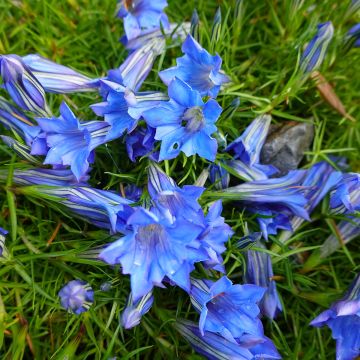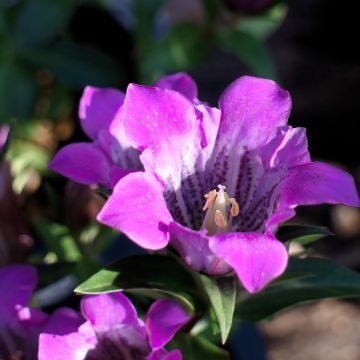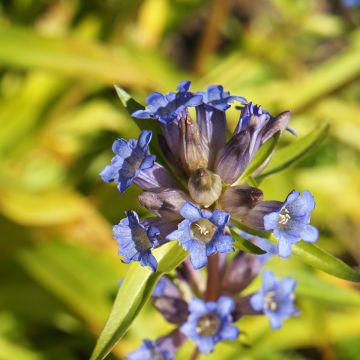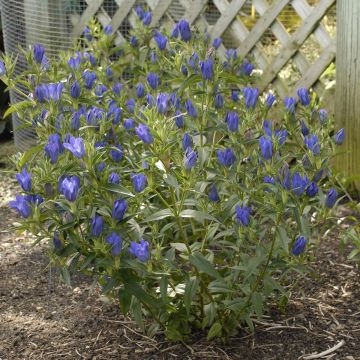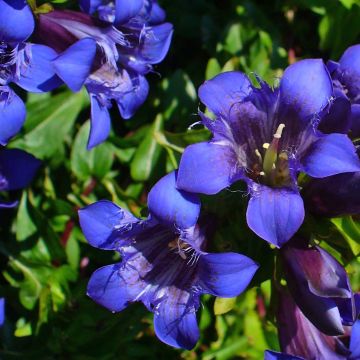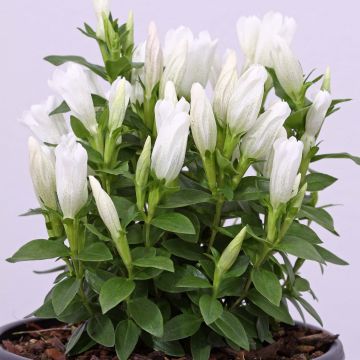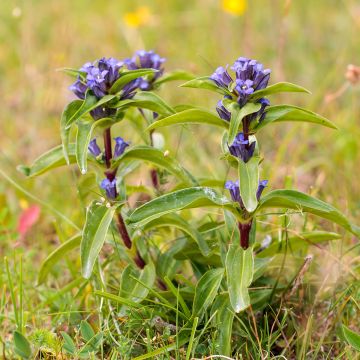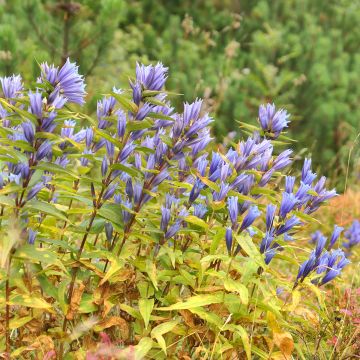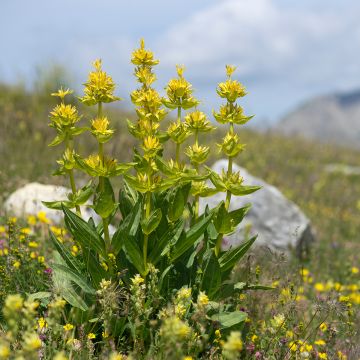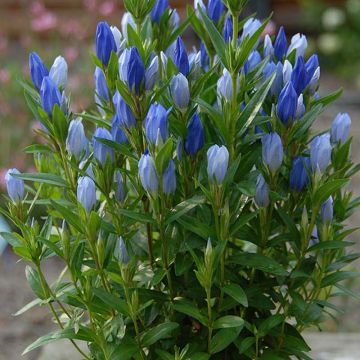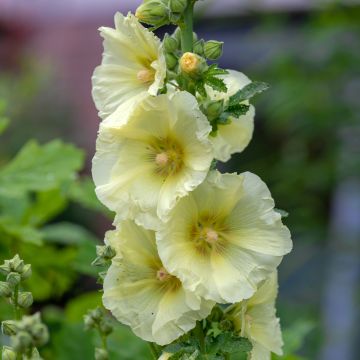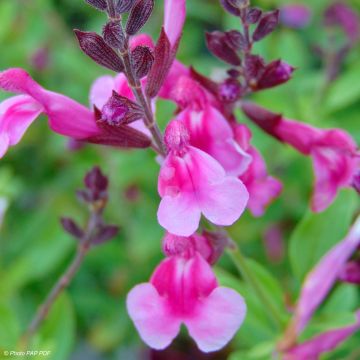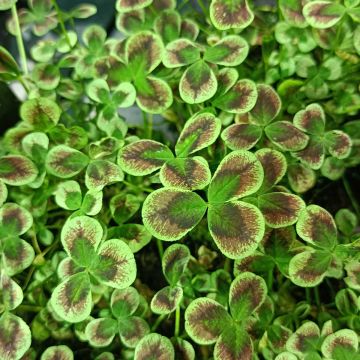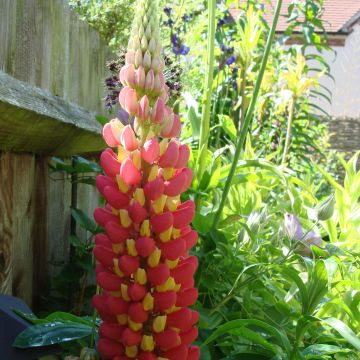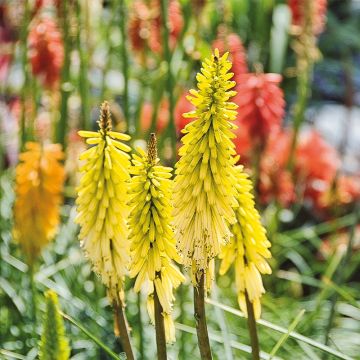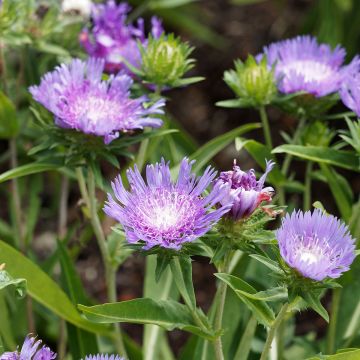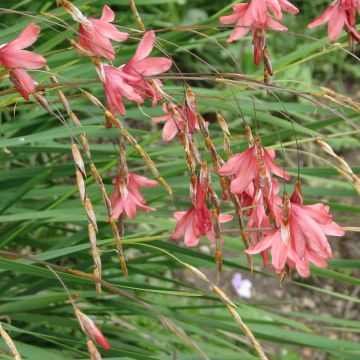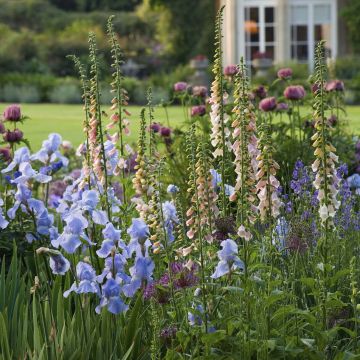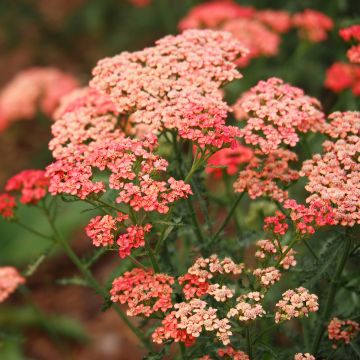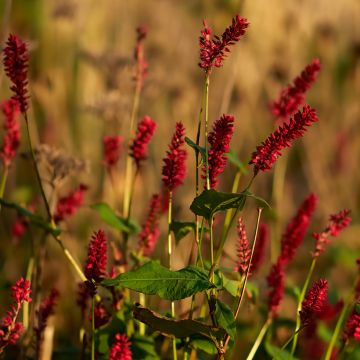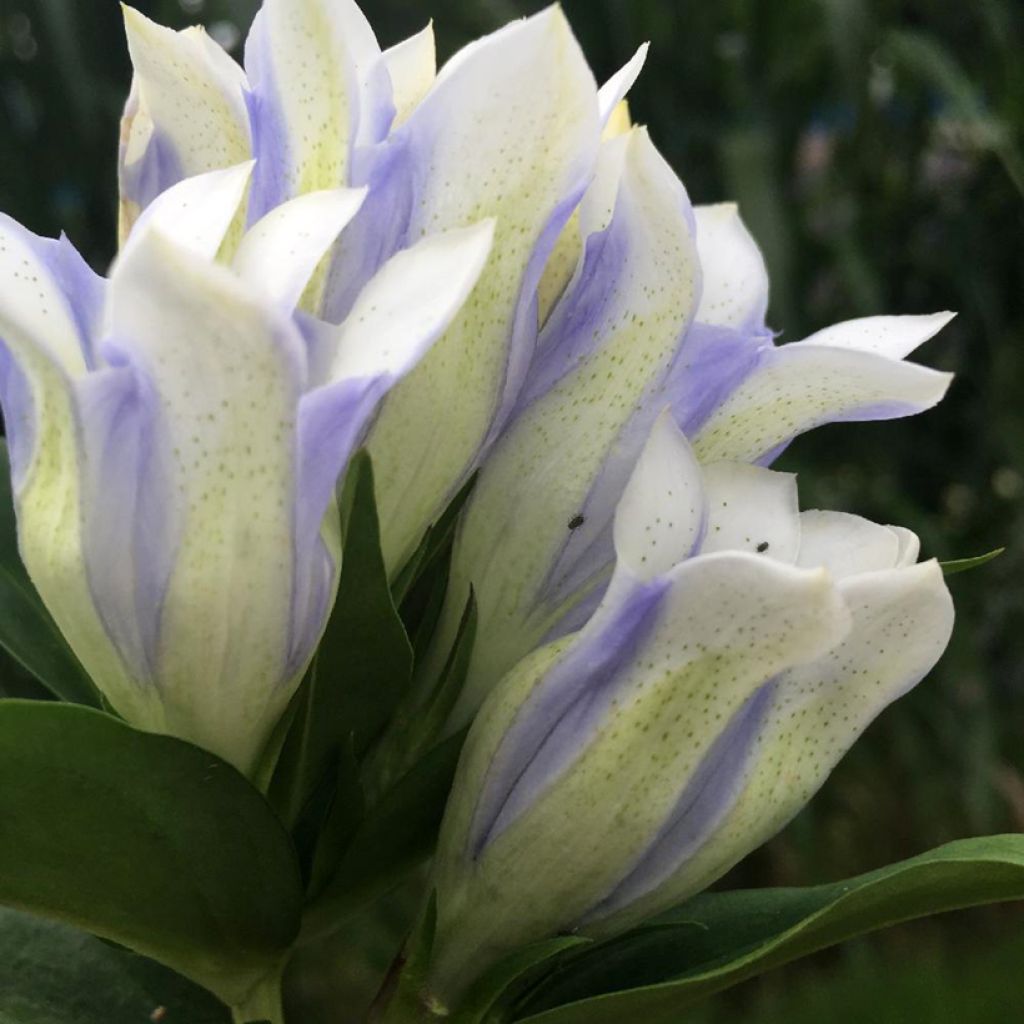

Gentiana Crystal Ashiro®
Gentiana Crystal Ashiro®
Gentiana Crystal Ashiro®
Gentian, Gentianella
This plant carries a 12 months recovery warranty
More information
We guarantee the quality of our plants for a full growing cycle, and will replace at our expense any plant that fails to recover under normal climatic and planting conditions.
From €5.90 for pickup delivery and €6.90 for home delivery
Express home delivery from €8.90.
Does this plant fit my garden?
Set up your Plantfit profile →
Description
The 'Crystal Ashiro' Gentian is a deciduous and very hardy variety of gentian, of relatively small size. Its very pretty flowers, upright trumpets, are white with light blue stripes and speckled with blue on the white parts. They bloom in mid-summer on a compact tuft of shiny green foliage. This variety will thrive in a cool rock garden in the morning sun or in partially shaded flower beds with moist soil.
The 'Crystal Ashiro' Gentian is part of the Ashiro series, which includes compact and colorful hybrids developed by Dr. Hikage in Japan. It belongs to the Gentianaceae family. It is a perennial cushion plant, slightly spreading, with deciduous or semi-evergreen foliage. Its lanceolate leaves are slightly pointed, rough, measuring about 4 to 6 cm long, a beautiful dark green color, with occasionally a bluish-violet tint at the tips. Slow-growing, it does not exceed 30 cm in all directions. Between July and September, numerous large solitary flowers in the form of wide trumpets bloom on very short stems, facing upwards. They open at the axils of the leaves or in terminal clusters, nearly hiding the foliage. They fully open only in very bright light. Each flower has a corolla composed of 5 lobes with a prominent and slightly curved central zone, white in color with light blue stripes along the edge of each petal. The white parts are also speckled with blue. This gentian develops a main root that goes deep into the soil and does not appreciate being disturbed.
This hybrid gentian 'Crystal Ashiro' is an alpine plant and may seem delicate to grow. It is actually robust and low-maintenance as long as the soil and exposure conditions are suitable. This mountain plant does not tolerate hot climates or more or less dry, limestone, and/or poorly drained soils. Place it in a cool, acidic, well-drained, fertile soil. It thrives in rocky, sunny but not too hot spaces, or partially shaded areas, where it can establish deep roots. Plant it in a rock garden, on a slope, at the edge of flower beds, or in a pot. Pair 'Crystal Ashiro' with other alpine plants, dwarf conifers, and bulbs such as Botanical Tulips, Crocuses, and Snowdrops. In partially shaded flower beds, combine it with Corydalis, Heucheras, and Brunneras. In pots, provide the same growing conditions.
The term Gentiana refers to Gentius, king of Illyria (present-day Albania) in the 2nd century BC, who, according to Pliny the Elder, discovered the medicinal and healing properties of the root of the Yellow Gentian.
Report an error about the product description
Flowering
Foliage
Plant habit
Botanical data
Gentiana
Crystal Ashiro®
Gentianaceae
Gentian, Gentianella
Cultivar or hybrid
Other Gentian
Planting and care
The 'Crystal Ashiro' Gentian should be planted in spring or autumn. During planting, between September and March, it should be placed in soil enriched with compost, non-limestone gravel, and humus-bearing, acidic soil, such as leaf compost. The soil should be well-drained but moist throughout the year. This plant is perfectly cold-resistant and does not appreciate hot climates and scorching summers. In spring, it would benefit from a fertilizer application in the form of crushed horn or well-decomposed manure. Its flowers open in the light and close in the evening, so a semi-shaded or sunny exposure in the morning would be welcome. In a cold greenhouse, this hybrid Gentian should be planted in a 10 to 20 cm pot, depending on the size of the plant, and in a mixture of compost and non-limestone gravel. Repot every year without disturbing the plant's main root.
Planting period
Intended location
Care
This item has not been reviewed yet - be the first to leave a review about it.
Summer flowering perennials
Haven't found what you were looking for?
Hardiness is the lowest winter temperature a plant can endure without suffering serious damage or even dying. However, hardiness is affected by location (a sheltered area, such as a patio), protection (winter cover) and soil type (hardiness is improved by well-drained soil).

Photo Sharing Terms & Conditions
In order to encourage gardeners to interact and share their experiences, Promesse de fleurs offers various media enabling content to be uploaded onto its Site - in particular via the ‘Photo sharing’ module.
The User agrees to refrain from:
- Posting any content that is illegal, prejudicial, insulting, racist, inciteful to hatred, revisionist, contrary to public decency, that infringes on privacy or on the privacy rights of third parties, in particular the publicity rights of persons and goods, intellectual property rights, or the right to privacy.
- Submitting content on behalf of a third party;
- Impersonate the identity of a third party and/or publish any personal information about a third party;
In general, the User undertakes to refrain from any unethical behaviour.
All Content (in particular text, comments, files, images, photos, videos, creative works, etc.), which may be subject to property or intellectual property rights, image or other private rights, shall remain the property of the User, subject to the limited rights granted by the terms of the licence granted by Promesse de fleurs as stated below. Users are at liberty to publish or not to publish such Content on the Site, notably via the ‘Photo Sharing’ facility, and accept that this Content shall be made public and freely accessible, notably on the Internet.
Users further acknowledge, undertake to have ,and guarantee that they hold all necessary rights and permissions to publish such material on the Site, in particular with regard to the legislation in force pertaining to any privacy, property, intellectual property, image, or contractual rights, or rights of any other nature. By publishing such Content on the Site, Users acknowledge accepting full liability as publishers of the Content within the meaning of the law, and grant Promesse de fleurs, free of charge, an inclusive, worldwide licence for the said Content for the entire duration of its publication, including all reproduction, representation, up/downloading, displaying, performing, transmission, and storage rights.
Users also grant permission for their name to be linked to the Content and accept that this link may not always be made available.
By engaging in posting material, Users consent to their Content becoming automatically accessible on the Internet, in particular on other sites and/or blogs and/or web pages of the Promesse de fleurs site, including in particular social pages and the Promesse de fleurs catalogue.
Users may secure the removal of entrusted content free of charge by issuing a simple request via our contact form.
The flowering period indicated on our website applies to countries and regions located in USDA zone 8 (France, the United Kingdom, Ireland, the Netherlands, etc.)
It will vary according to where you live:
- In zones 9 to 10 (Italy, Spain, Greece, etc.), flowering will occur about 2 to 4 weeks earlier.
- In zones 6 to 7 (Germany, Poland, Slovenia, and lower mountainous regions), flowering will be delayed by 2 to 3 weeks.
- In zone 5 (Central Europe, Scandinavia), blooming will be delayed by 3 to 5 weeks.
In temperate climates, pruning of spring-flowering shrubs (forsythia, spireas, etc.) should be done just after flowering.
Pruning of summer-flowering shrubs (Indian Lilac, Perovskia, etc.) can be done in winter or spring.
In cold regions as well as with frost-sensitive plants, avoid pruning too early when severe frosts may still occur.
The planting period indicated on our website applies to countries and regions located in USDA zone 8 (France, United Kingdom, Ireland, Netherlands).
It will vary according to where you live:
- In Mediterranean zones (Marseille, Madrid, Milan, etc.), autumn and winter are the best planting periods.
- In continental zones (Strasbourg, Munich, Vienna, etc.), delay planting by 2 to 3 weeks in spring and bring it forward by 2 to 4 weeks in autumn.
- In mountainous regions (the Alps, Pyrenees, Carpathians, etc.), it is best to plant in late spring (May-June) or late summer (August-September).
The harvesting period indicated on our website applies to countries and regions in USDA zone 8 (France, England, Ireland, the Netherlands).
In colder areas (Scandinavia, Poland, Austria...) fruit and vegetable harvests are likely to be delayed by 3-4 weeks.
In warmer areas (Italy, Spain, Greece, etc.), harvesting will probably take place earlier, depending on weather conditions.
The sowing periods indicated on our website apply to countries and regions within USDA Zone 8 (France, UK, Ireland, Netherlands).
In colder areas (Scandinavia, Poland, Austria...), delay any outdoor sowing by 3-4 weeks, or sow under glass.
In warmer climes (Italy, Spain, Greece, etc.), bring outdoor sowing forward by a few weeks.

































